The explosive growth of digital marketing over the last 20 years has caused a profound change in the commercial environment. Previously dominated by billboards and prime-time TV spots, media advertising today flourishes in the digital sphere, providing firms with unmatched chances to engage with their target audience. Businesses are using platforms like Google, Facebook, and YouTube to rethink their development potential as they become essential components of advertising strategy. This blog examines how media advertising has changed contemporary business and why it is still essential to successful digital marketing.
The Evolution of Digital Media Advertising
Media advertising has always been about reaching the right audience at the right time. In the past, this meant purchasing ad space in newspapers or securing airtime during popular TV shows. However, the internet revolutionized this process, shifting advertising dollars to digital platforms that offer precision targeting, measurable results, and real-time adjustments.
Search Engine Advertising: Platforms like Google Ads are pivotal in this evolution. By targeting users actively searching for specific products or services, businesses can connect with high-intent consumers. A Google Ads agency plays a critical role here, helping brands optimize campaigns to maximize ROI.
Social Media Advertising: On platforms like Meta, businesses can build awareness by engaging audiences based on their interests and behaviors. The ability to create visually rich, targeted campaigns has made social media advertising indispensable for modern marketers.
Programmatic Advertising: Automated ad buying has further streamlined the process, enabling businesses to target audiences across websites and apps with minimal manual intervention. This technology allows brands to reach their ideal customers more effectively and efficiently.
The Business Impact of Media Advertising
Media advertising has redefined how businesses approach growth, offering tools and techniques that were unimaginable just a decade ago.

Here are some key ways in which it’s driving transformation:
- Unmatched Audience Reach
Digital advertising allows businesses to target both broad and niche audiences with incredible accuracy. Platforms like Google and Facebook boast billions of active users monthly, enabling companies to reach potential customers in almost every corner of the globe.
For example, in 2022, Google’s ad revenue exceeded $224 billion, a testament to its pivotal role in connecting businesses with their audience.
- Cost-Effective Marketing
Unlike traditional advertising, digital campaigns can be tailored to suit budgets of any size. Small businesses, in particular, benefit from the scalability of platforms like Google Ads, where even modest investments can yield substantial results.
- Enhanced Customer Insights
Media advertising doesn’t just generate leads; it also provides valuable data about consumer behavior. Insights into clicks, conversions, and engagement metrics empower businesses to fine-tune their strategies for better performance.
- Personalized Customer Experiences
With tools like dynamic ads and retargeting, businesses can create tailored experiences for individual users. According to a study by Epsilon, 80% of consumers are more likely to purchase from brands that offer personalized experiences, highlighting the importance of this approach.
The Role of Integration in Media Advertising
A standout feature of modern media advertising is the ability to integrate campaigns across multiple platforms. This integration not only improves efficiency but also ensures consistent messaging across all touchpoints.
- Cross-Platform Campaigns
A successful campaign might start with a Google search ad to capture intent, followed by retargeting on Facebook to reinforce brand messaging. This multi-platform approach ensures that businesses remain visible to potential customers throughout their journey.
- Omnichannel Strategies
The integration of media advertising with email marketing, content creation, and influencer collaborations amplifies the overall impact. For instance, an ad on Instagram might lead users to a blog post, which then prompts them to subscribe to a newsletter—each channel reinforcing the other.
- Data Synchronization
Tools like Deelixy help marketers consolidate data from multiple platforms, providing a unified view of campaign performance. This enables businesses to make data-driven decisions and adapt their strategies in real-time.
Challenges and Opportunities in Media Advertising
While media advertising offers incredible potential, it’s not without its challenges. Ad fatigue, privacy concerns, and rising costs are significant issues that businesses must navigate.

However, these challenges also present opportunities for innovation and differentiation.
- Overcoming Ad Fatigue
Consumers are bombarded with ads daily, leading to ad blindness. Creative content and storytelling can help brands stand out, engaging audiences in meaningful ways.
- Navigating Privacy Regulations
As governments enforce stricter data privacy laws, businesses must adapt by focusing on transparent and ethical data practices. Building trust through compliance not only ensures longevity but also strengthens customer relationships.
- Embracing Automation and AI
Advances in automation and artificial intelligence are revolutionizing media advertising. From AI-driven ad creatives to predictive analytics, these technologies enable marketers to operate more efficiently and effectively.
Why Media Advertising Is Indispensable for Modern Business
The rise of digital media advertising marks a paradigm shift in how businesses approach marketing. Unlike traditional methods, digital platforms offer interactivity, measurement, and scalability. Companies that embrace these tools can achieve greater visibility, higher engagement, and stronger customer loyalty.
Businesses who use tools collaborate with specialist services like a Google Ads agency stand to earn a competitive edge as long as they continue to engage in digital strategy. In addition to making campaign administration easier, these resources offer information that help make better decisions.
Media advertising has grown to be a crucial component of contemporary business, establishing previously unheard-of connections between consumers and corporations. Businesses may reinvent their consumer relationships and open up new development prospects by utilizing platforms such as Google Ads and Meta. The future of marketing will continue to be shaped by media advertising with careful preparation, innovative execution, and strong data analytics.
